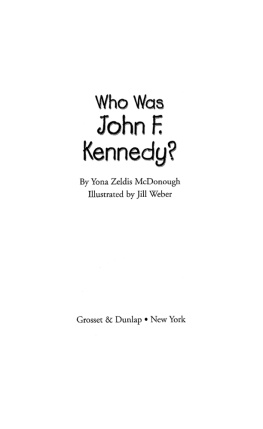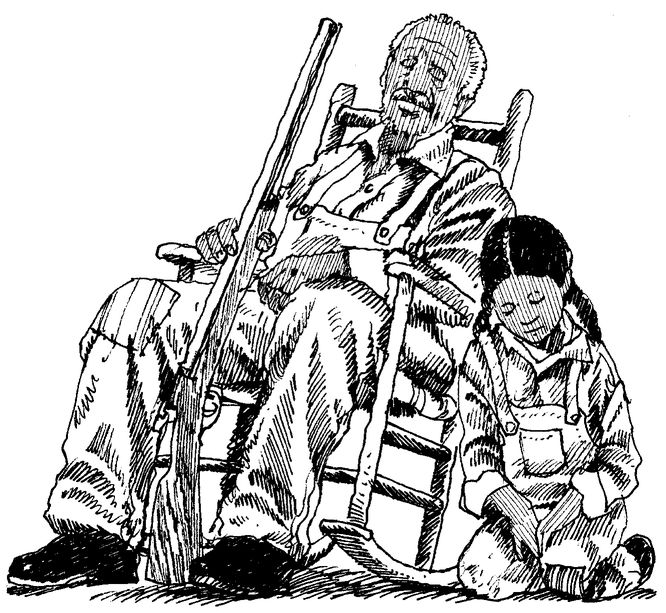Contents
For my mother, Malcah ZeldisYZM
For Ketty and Alex, with hope for the futureSM
PENGUIN WORKSHOP
An Imprint of Penguin Random House LLC, New York
Penguin supports copyright. Copyright fuels creativity, encourages diverse voices, promotes free speech, and creates a vibrant culture. Thank you for buying an authorized edition of this book and for complying with copyright laws by not reproducing, scanning, or distributing any part of it in any form without permission. You are supporting writers and allowing Penguin to continue to publish books for every reader.
Text copyright 2010 by Yona Zeldis McDonough. Illustrations copyright 2010 by Stephen Marchesi. Cover illustration copyright 2010 by Penguin Random House LLC. All rights reserved. Published by Penguin Workshop, an imprint of Penguin Random House LLC, New York. PENGUIN and PENGUIN WORKSHOP are trademarks of Penguin Books Ltd. WHO HQ & Design is a registered trademark of Penguin Random House LLC. Printed in the USA.
Visit us online at www.penguinrandomhouse.com.
Library of Congress Control Number: 2009051593
Ebook ISBN 9781101445938
Version_2
Who Was Rosa Parks?
PINE LEVEL, ALABAMA, 1919
Every morning, Rosa Parks walked to school. Every afternoon, she walked back home again. There was no school bus to her school. She didnt mind the walk. She was used to it.
Often she saw a big, yellow school bus roll past her. But the bus never stopped for her. All the children inside were white. It was taking them to a school that was for white students only. Rosa was black.
Rosa grew up in Pine Level, Alabama. At that time in the South, black people and white people led separate lives. All of Rosas friends and family were black. She hardly knew any white people. How could she? Black people werent allowed in the same restaurants or hotels. They couldnt swim in public pools with white people or drink from the same water fountains.
Every time she saw a bus carrying white children to and from school, it made her feel like black children didnt matter as much as white children. Sometimes the white children threw trash out the windows, trying to hit the black children. After a while, Rosa and the other black children stopped walking by the road. They went through the fields instead.
The school for the white children was nicer, too. It had real glass panes in the windows. At Rosas school, there was no glass, only shutters. Still, Rosa knew inside that she was as good as any white child. She was as good as anyone, and one day she would prove it.
Chapter 1
Down on the Farm
Rosa Louise McCauley was born in Tuskegee, Alabama, on February 4, 1913. Her father, James, was a carpenter. Her mother, Leona, was a teacher. Rosa was small for her age. She was often sick with a sore throat. She had to spend a lot of time in bed.
When Rosa was about two and a half, her mother and father separated. Rosa moved to Pine Level, just outside Montgomery, Alabama. There, she lived on her grandparents farm with her mother and her little brother, Sylvester. She liked the farm. With her family around, she felt safe and secure.
Beyond the farm, the world was not such a safe place. Some white people living nearby belonged to a group called the Ku Klux Klan. They wore white robes and hoods to cover their faces. Many times, Klan members set fire to houses where black people lived or churches where they prayed. The police did nothing to stop the attacks.

KU KLUX KLAN
THE KU KLUX KLAN, OR KKK AS IT IS KNOWN, IS A HATE GROUP THAT USES THREATS AND VIOLENCE AGAINST BLACKS AND OTHER MINORITIES. THE NAME PROBABLY CAME FROM THE GREEK WORD KUKLOS, MEANING CIRCLE. THE KU KLUX KLAN WAS A CIRCLE, OR BAND, OF BROTHERS. TENNESSEE VETERANS OF THE CONFEDERATE ARMY FOUNDED THE KLAN AFTER THE CIVIL WAR ENDED IN 1865. GROUPS SOON SPREAD THROUGHOUT THE SOUTH. KLAN MEMBERS WORE WHITE ROBES AND POINTED HATS WITH MASKS TO HIDE THEIR FACES. OFTEN THEY LEFT BURNING CROSSES IN FRONT OF THE VICTIMS HOMES. DURING THE 1920S, WHEN ROSA WAS A CHILD, THE KLAN SPREAD THROUGHOUT THE COUNTRY. AT ONE POINT, THERE WERE ABOUT FOUR MILLION MEMBERS IN THE UNITED STATES. TODAY, THAT NUMBER IS ABOUT FIVE THOUSAND.
When Klan members marched by Rosas house, her grandfather stood at the door. He held a shotgun in his hand. Some nights, he slept in a rocking chair, the shotgun in his lap. Rosa often stayed curled up beside him.
Even whites who didnt belong to the Ku Klux Klan could be cruel. A wealthy planter named Moses Hudson would hire black children to pick and chop cotton. He paid them fifty cents a day. The children usually didnt wear shoes, and the hot ground burned their bare feet so badly that they would pick the cotton on their knees. If any blood got on the white cotton, they would be whipped.
JIM CROW LAWS
IN THE SOUTHERN UNITED STATES FROM 1876 TO 1965, JIM CROW LAWS KEPT SEGREGATIONSEPARATION OF BLACKS AND WHITESIN PUBLIC FACILITIES. BLACKS COULD NOT BUY HOUSES IN WHITE NEIGHBORHOODS OR EAT AT THE SAME RESTAURANTS AS WHITE PEOPLE. THEY EVEN HAD TO BRING THEIR CLOTHES TO ALL-BLACK LAUNDROMATS. THE TERM JIM CROW PROBABLY COMES FROM MINSTREL SHOWS OF THE LATE 1800S. WHITE MEN WOULD WEAR BLACK FACE MAKEUP AND MAKE FUN OF AFRICAN AMERICANS. JIM CROW WAS THE NAME OF A CHARACTER IN MINSTREL SHOW SKITS.



























